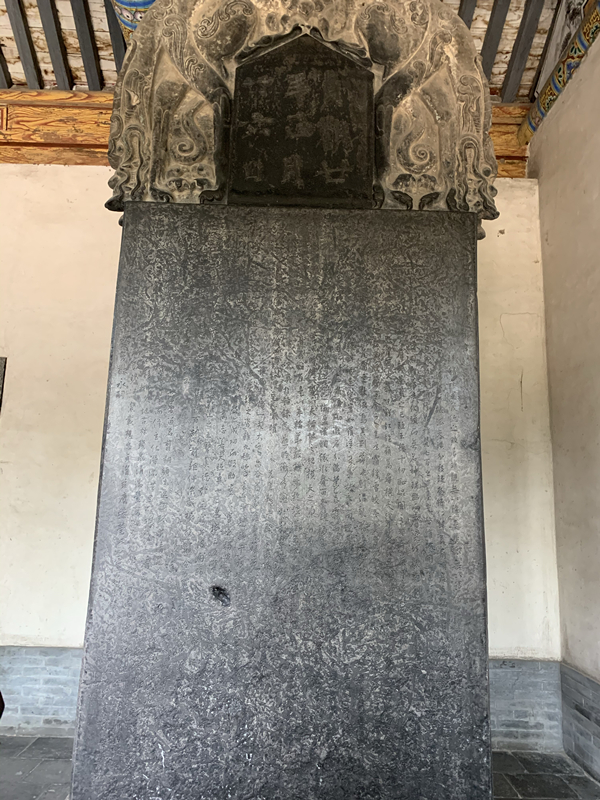
The Inscription of the Preface of Jinci Temple. [Photo provided to goshanxi.com.cn]
Two ancient relics in Taiyuan, capital of North China's Shanxi province, were included in the first batch of ancient famous stele and inscription list issued by the National Cultural Heritage Administration on July 14.
The two pieces from Taiyuan are the Mausoleum Inscription of Yu Hong from the Sui Dynasty (581-618), and the Inscription of the Preface of Jinci Temple.
The former, which was unearthed in July 1999 in Wangguo village of Jinyuan district, not only showcases the Chinese character font used during the Sui Dynasty but also holds significant research value due to the historical data it contains.
The latter from the Tang Dynasty (618-907) integrates historiography, literature, and calligraphy. It is currently housed in the Jinci Museum and was personally inscribed by Emperor Li Shimin of the Tang Dynasty.
The national list consists of 1,658 significant cultural relics, including stone carvings and cliff inscriptions in total, with the carved eras ranging from the Warring States Period (475-221 BC) to the Qing Dynasty (1644-1911) and 20 different types of scripts, including Chinese, Tibetan, Mongolian, Manchu, and Uyghur.
The selected cultural relics comprehensively present the carved eras, types, and distribution of ancient Chinese steles, and document the historical exchanges and integration among different ethnic groups in ancient China.
They also demonstrate the evolution of ancient Chinese writing, calligraphy, and literature, reflecting significant achievements in economic, social, scientific, and technological development while recording the history of cultural exchanges and mutual learning between Chinese and other civilizations.
In the future, Taiyuan's cultural heritage department will strengthen its protection and management of ancient steles and stone carvings, further enhancing their preservation and usage.
